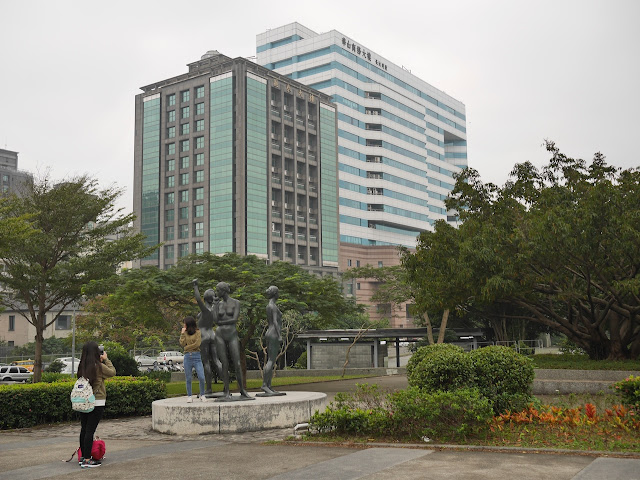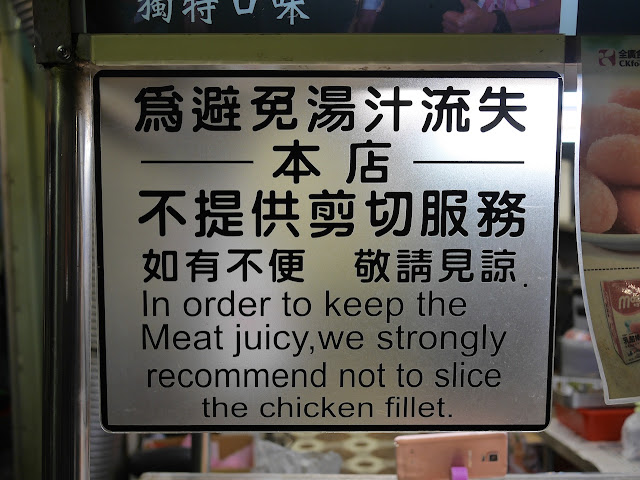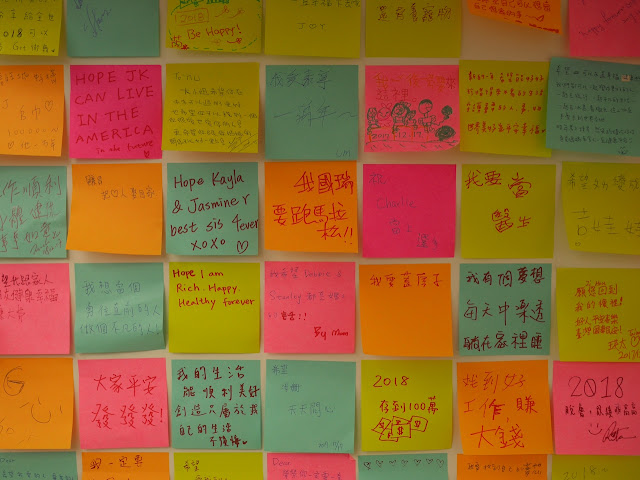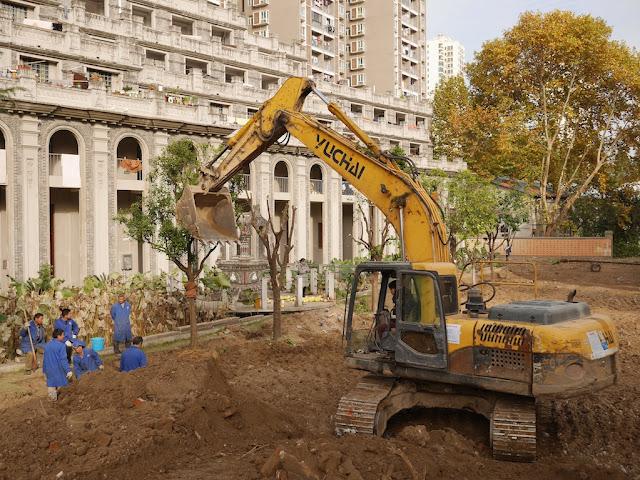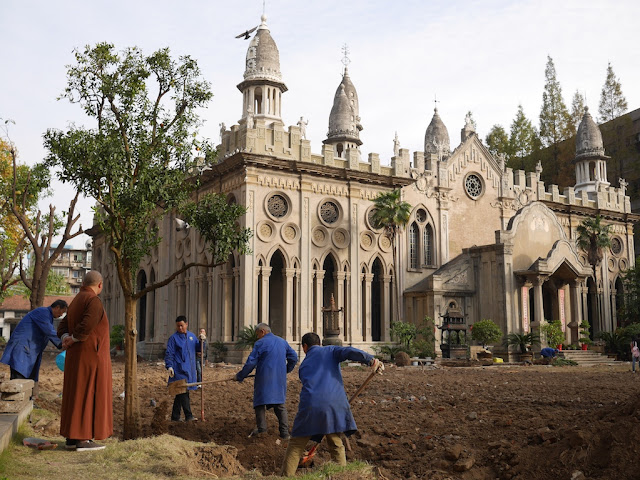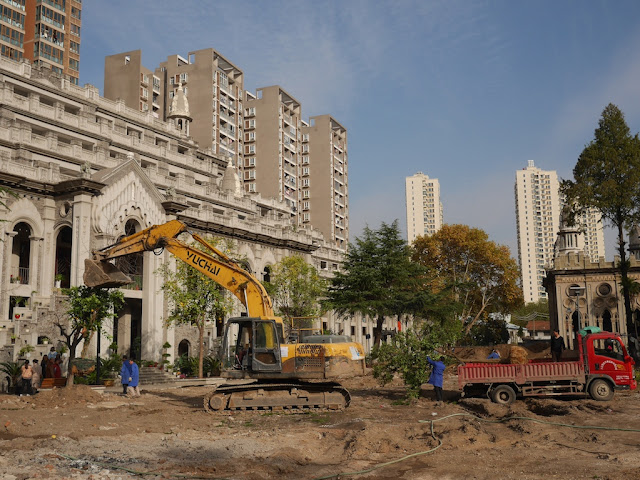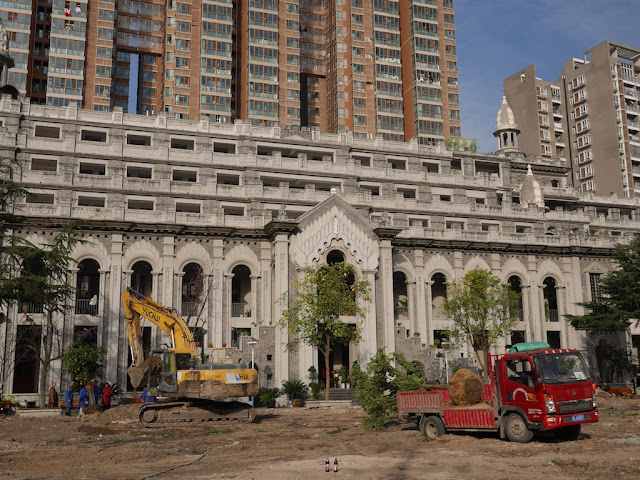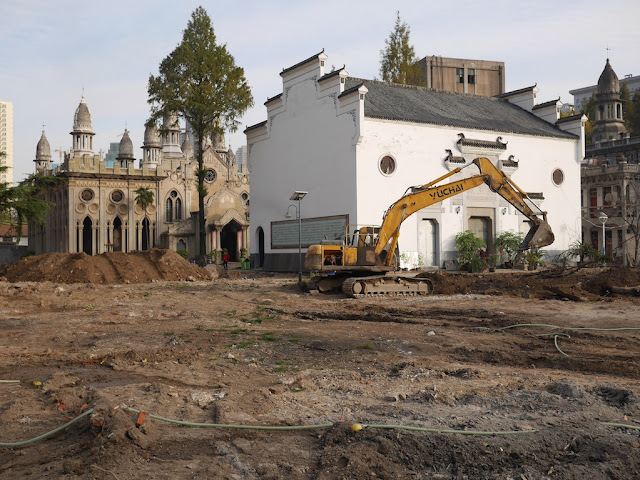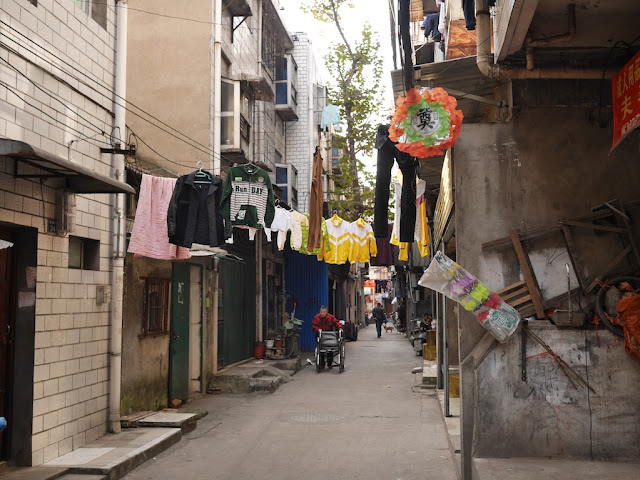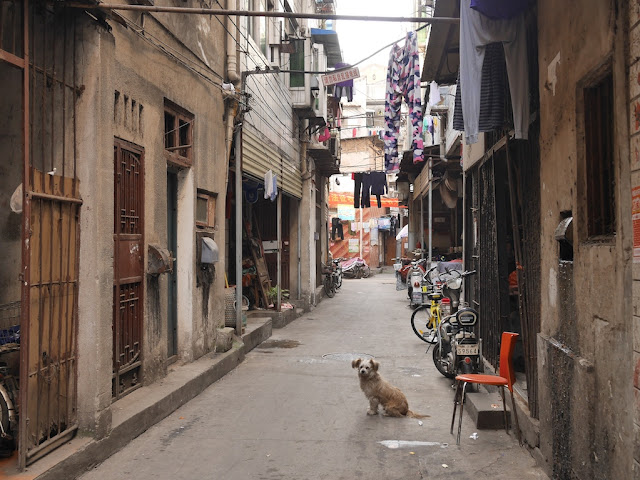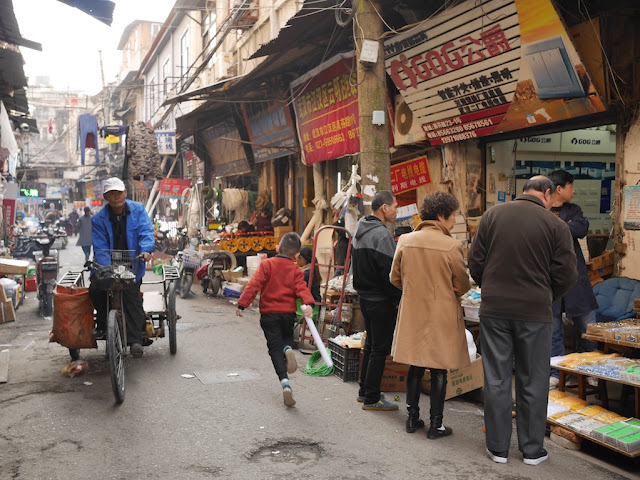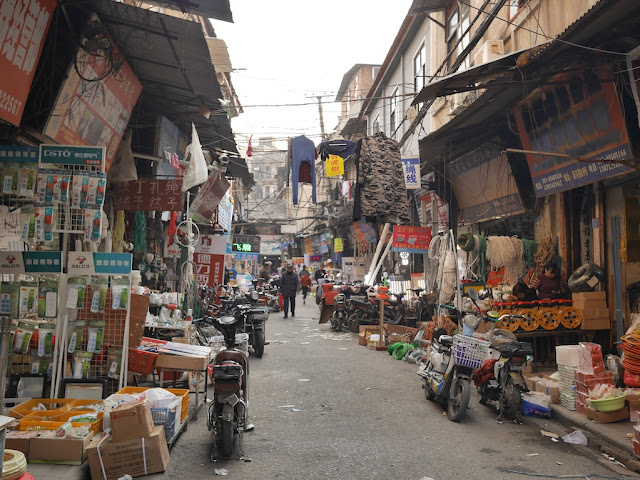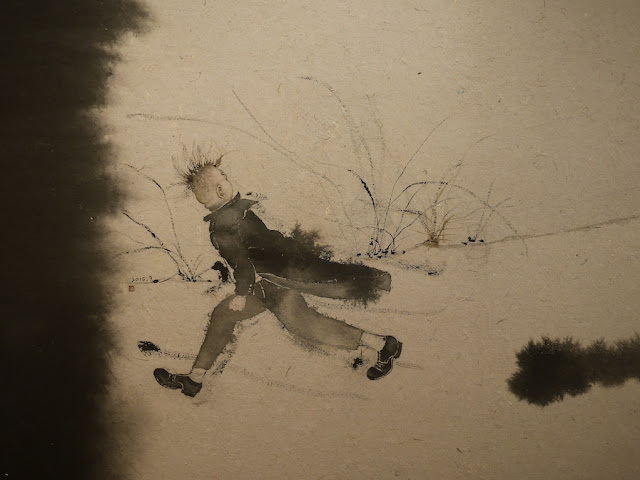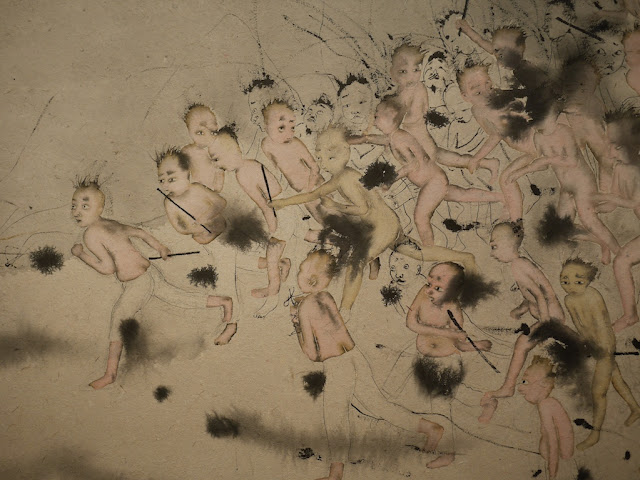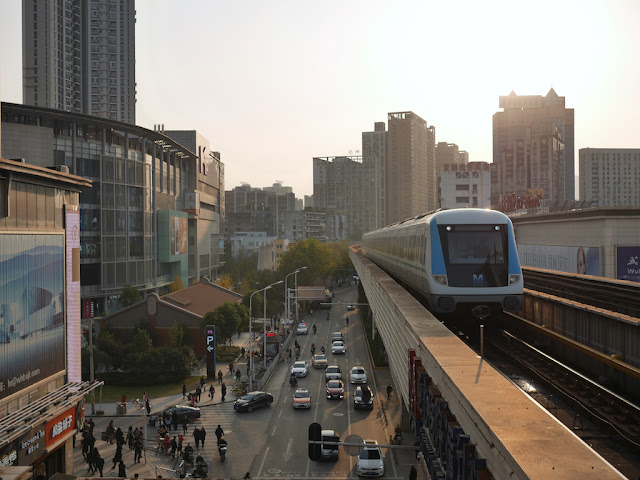Sunday, December 31, 2017
Saturday, December 30, 2017
A Recommendation in Taipei
Posted by
Brian Glucroft
at
9:03 PM
I didn't try their chicken, partly because I had already eaten river eel with onions, ginseng chicken soup, and a gua bao at other vendors around the Huaxi Street Night Market in Taipei. But if I order it someday, I plan to heed their strong recommendation.
Friday, December 29, 2017
Phones, Noodles, and Massages: A Taipei Trifecta
Posted by
Brian Glucroft
at
11:23 PM
One of those places perfectly suited for buying a phone, eating Tokyo-style noodles, and getting a massage:
Admittedly, the building's design, which significantly differs from the other buildings around it, is what catches my eye when I have walked by in the past. Also admittedly, I have not taken advantage of any of the offerings now there.
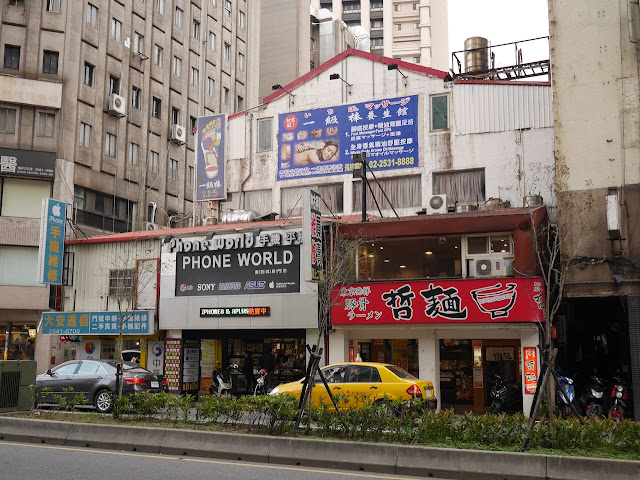 |
| Alongside Linsen North Road in Taipei |
Admittedly, the building's design, which significantly differs from the other buildings around it, is what catches my eye when I have walked by in the past. Also admittedly, I have not taken advantage of any of the offerings now there.
Thursday, December 28, 2017
Public Post-it Wishes in Taipei
Posted by
Brian Glucroft
at
10:05 PM
At Maji Square, which offers a number of options for shopping and eating, in Taipei there currently is a display featuring Post-it notes.
Instructions recommend: "Write down your xmas wishes and share your ideal life with us!"
And the board was full of neatly placed Post-its.
In most cases the wishers didn't identify themselves, though they apparently had no problem that their various wishes weren't very top secret.
Instructions recommend: "Write down your xmas wishes and share your ideal life with us!"
And the board was full of neatly placed Post-its.
In most cases the wishers didn't identify themselves, though they apparently had no problem that their various wishes weren't very top secret.
Wednesday, December 27, 2017
Minimally Mentioned Matters and a Mailbox
Posted by
Brian Glucroft
at
11:50 PM
I have been lately occupied with matters that I wish had not mattered. They aren't matters which are the type of thing I would typically blog about, and I will probably keep things that way. But at least mentioning the matters that I won't mention later serves as a segue for sharing this recent photo of a mailbox in Taipei:
I wouldn't classify my previously mentioned matters as very top secret. To help reduce any curiosity I may have piqued, I will add that I wouldn't expect them to be especially interesting to most readers.
And I do like the mailbox. Perhaps so will some readers. I don't know if there's anything interesting inside though.
I wouldn't classify my previously mentioned matters as very top secret. To help reduce any curiosity I may have piqued, I will add that I wouldn't expect them to be especially interesting to most readers.
And I do like the mailbox. Perhaps so will some readers. I don't know if there's anything interesting inside though.
Sunday, December 24, 2017
A Hearty Perfume in Taipei
Posted by
Brian Glucroft
at
11:48 PM
Over six years ago I wrote about some similarities in Taiwanese and Italian food culture. Today in Taipei I saw a promotion reminding me of that post.
More soon. I'm definitely eating well, though I don't now have anything special to report about perfumes.
More soon. I'm definitely eating well, though I don't now have anything special to report about perfumes.
Tuesday, December 19, 2017
What's the Sichuan Pepper Frequency, Kenneth?
Posted by
Brian Glucroft
at
11:59 PM
 |
| Spicy bullfrog with numbing Sichuan peppers at a restaurant in Chongqing |
Like many others who enjoy Sichuan cuisine, I am a big fan of Sichuan pepper, which has a hard-to-miss numbing effect. So I am happy to (belatedly) link to a fascinating and informative piece by Taylor Holiday about why Sichuan pepper is difficult to find in the U.S. But there is one small part with which I disagree:
Even more than other spices, endowed by evolution with defensive odors and tastes, Sichuan pepper seems designed not to be eaten. Once you get past the thorns, the taste of a fresh or freshly dried berry leaves your mouth, tongue, and lips buzzing and numb for several minutes. It is literally electric: The active ingredient, sanshool, causes a vibration on the lips measured at 50 hertz, the same frequency as the power grid in most parts of the world, according to a 2013 study at University College London.Sichuan pepper's vibrating effect is rather notable. But that the vibration has been measured at a frequency similar to the frequency of many electrical grids doesn't make it "literally electric". It doesn't even make it figuratively electric in any particularly meaningful way. (Just to be clear, the referenced 2013 study doesn't mention this similarity.)
Basically, this is because hertz is simply a measure of the number of cycles per second and there's nothing special about the measurement of 50 hertz on its own. For example, on a standardly tuned piano tuned there is a key for the musical note G (Contra octave) which will produce a sound at 48.9994 hertz. In this case, the hertz measurement reflects the fundamental frequency of that note. If you wanted, you could retune the piano so that the key produced a sound at 50 hertz. In either case the note isn't any more electric or Sichuan peppery than the other notes on the piano, even if it's an electric piano. Similarly, 50 hertz electrical grids aren't literally the musical note G.
For another example, a strobe light could be set to flicker at 50 hertz. Again, this wouldn't be any more electric than if it flickered slower or faster.
And countries such as the U.S., Canada, and Guatemala have electrical grids with a frequency of 60 hertz. Is Sichuan pepper less electric there?
So enjoy some Sichuan peppers. But unless you're also sticking your finger in an electric outlet while grounded (note: do not do this) or something similar, the experience won't be literally electric because of the exact frequency of the vibrations. The buzz is grand nonetheless.
Additional note: For those who don't understand the reference to Kenneth, see here.
Monday, December 18, 2017
Friday, December 15, 2017
Thursday, December 14, 2017
Wednesday, December 13, 2017
A Live Game of Xiangqi in Wuhan
Posted by
Brian Glucroft
at
11:14 PM
While to many people this game of xiangqi may not have presented as much of a photographic opportunity as another in Wuhan, it was far more dynamic overall.
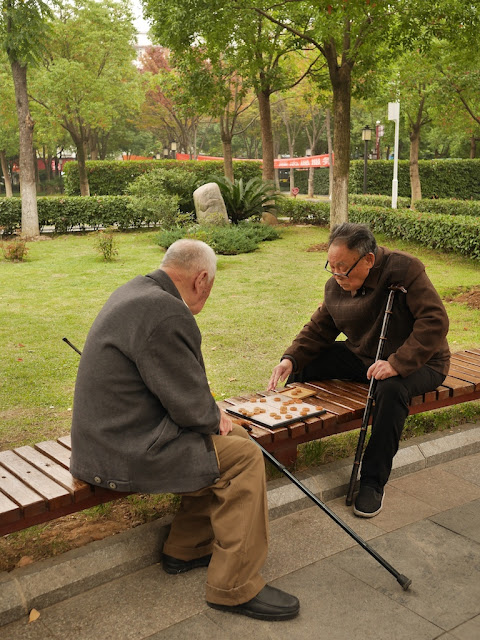 |
| At Wuchang Lianzheng Wenhua Park (武昌廉政文化公园) |
Monday, December 11, 2017
A Solid Game of Xiangqi in Wuhan
Posted by
Brian Glucroft
at
11:35 PM
 |
| On the Jianghan Road Pedestrian Street |
The above sculpture of a xiangqi game appears to have been designed to encourage people to have their photo taken while pretending to be one of the players. You would have to bring your own fan and sandals though.
I have been bouncing around — of both the intracity and intercity variety — quite a bit lately. This perhaps to a degree unconsciously influenced the recent focus here on rather still statues. Other topics are on the way — probably more statues at some point too.
Friday, December 8, 2017
Poured Love in Wuhan
Posted by
Brian Glucroft
at
11:16 PM
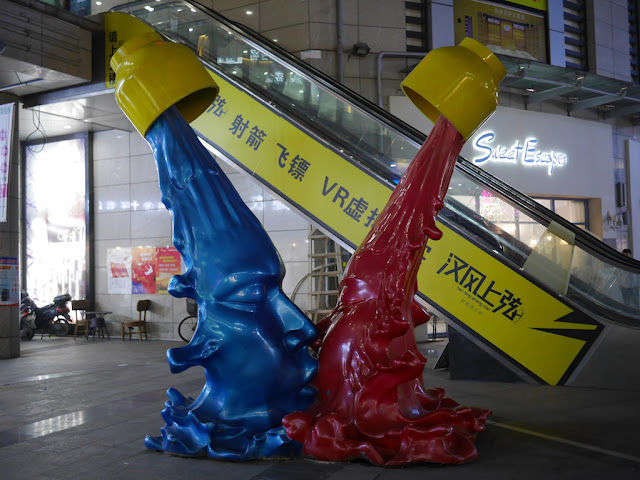 |
| At the Baolijin International Plaza not far away from a lounging Bugs Bunny |
Thursday, December 7, 2017
Monday, December 4, 2017
A Time of Change and Digging at the Gude Temple in Wuhan
Posted by
Brian Glucroft
at
11:12 PM
Even after visiting hundreds of Buddhist temples in China, the Gude Temple in Wuhan can catch you by surprise. According to a photo gallery featuring the temple on the Hubei Provincial People’s Government's website:
Below are some scenes which feature some of the change now occurring at Gude Temple as visitors still make their way around. The temple is easily reachable by going to Toudao Street Station on the Wuhan Metro and then walking down Gudesi Road. But that might not work in the not-too-distant future. Many of the areas near the temple are changing to a greater degree.
It was built in the 3rd year of Emperor Guangxu (1877) in the Qing Dynasty.I wouldn't describe the location as being in China's hinterland, but I agree the architecture is unlike any other temple I have seen in China. My recent visit was made all the more special thanks to work affecting much of the temple's grounds — reminiscent of the construction I walked through when I visited the Changchun Taoist Temple in Wuhan six years ago.
The present Great Buddhist Hall was built in 1921 and later was expanded into Gude Temple, which covers an area of 20000 square meters and has a floor space of 3600 square meters.
The Gude Temple was built according to style of the Alantuo Temple in Myanmar in an erratic combination of all thinkable architectural styles and traditions, being unique in construction of Buddhist temples in China’s hinterland.
Below are some scenes which feature some of the change now occurring at Gude Temple as visitors still make their way around. The temple is easily reachable by going to Toudao Street Station on the Wuhan Metro and then walking down Gudesi Road. But that might not work in the not-too-distant future. Many of the areas near the temple are changing to a greater degree.
Saturday, December 2, 2017
Views of and from Toudao Street Station in Wuhan
Posted by
Brian Glucroft
at
10:16 PM
The Toudao Street Station on Line 1 of the Wuhan Metro is a brief walk from one end of Gudesi Road. For contrasts to the previously shared scenes from Gudesi Road and of metro trains arriving at two other stations on Line 1, here are photos of two trains departing the station:
 |
| View of Toudao Street Station facing northeast from a pedestrian bridge |
 |
| View facing southwest from Toudao Street Station |
Thursday, November 30, 2017
A Few Scenes from Gudesi Road in Wuhan
Posted by
Brian Glucroft
at
11:58 PM
Unlike Qingfen Road in Wuhan, Gudesi Road (古德寺路) is labeled on both Google Maps and Baidu Map. However, both maps are missing sections of the street and Baidu Map mistakenly labels a connecting street with the name. In any case, there aren't as many shops on Gudesi Road as there are on Qingfen Road, but plenty of life can still be found there.
And if you are lucky, you may meet a rather friendly dog.
While Gudesi Road wouldn't seem remarkable to most people in China, the temple it is named after is another story. More about that later.
And if you are lucky, you may meet a rather friendly dog.
While Gudesi Road wouldn't seem remarkable to most people in China, the temple it is named after is another story. More about that later.
Monday, November 27, 2017
Thursday, November 23, 2017
A Thanksgiving in Wuhan
Posted by
Brian Glucroft
at
11:59 PM
I didn't have any rats running up my leg like I did in Changsha five years ago, but Thanksgiving this year was still a success. Although a holiday-special pulled turkey breast burger with cranberry BBQ sauce took way too long to arrive at lunch, the delay led to a free slice of dark chocolate cake (thank you, Sunny). The cake was more impressive than the burger, so it felt like a net win. For dinner I chose a Western upscale hotel with a buffet that I figured would be serving turkey today. Not only was I correct, but I arrived in time to score a leg. It took a little extra effort to communicate that, yes, I really wanted the whole leg. Early bird scores the worm and all that.
I won't be sharing any photos of the pricey food since none of it would be remarkable for Thanksgiving fare. Part of the reason for my choice in dining location tonight was that it would offer the opportunity for a late walk somewhere I hadn't visited before. So in that spirit, for a photo here is a scene from tonight in Wuhan's Hanyang District including the Yingwuzhou Yangtze River Bridge (鹦鹉洲长江大桥):
Happy Thanksgiving.
I won't be sharing any photos of the pricey food since none of it would be remarkable for Thanksgiving fare. Part of the reason for my choice in dining location tonight was that it would offer the opportunity for a late walk somewhere I hadn't visited before. So in that spirit, for a photo here is a scene from tonight in Wuhan's Hanyang District including the Yingwuzhou Yangtze River Bridge (鹦鹉洲长江大桥):
Happy Thanksgiving.
Wednesday, November 22, 2017
"Integration: Fusion and Adaptation" at the Wuhan Art Museum
Posted by
Brian Glucroft
at
11:01 PM
"Integration: Fusion and Adaptation" is the fourth and current exhibition for the Wuhan Ink Art Biennale at the Wuhan Art Museum. As described at the museum:
One piece on display features Chinese calligraphy, common at art museums in China.
Less common is the calligrapher's home country — the U.S. — and the topic of the writing, which is captured in Michael Cherney's title for the work: Excerpt from Thoreau's A Week on the Concord and Merrimack Rivers (2012).
South Korean Shin Young Ho's piece Liquid Drawing_4207 (2015) doesn't include calligraphy, but it does have ants.
Li Huichang's Groan No. 66 (2015) has neither calligraphy nor ants, but there is still much going on.
One of the more colorful pieces at the exhibition is Paradise (2008) by Huang Min.
Finally, the piece I pondered most was Stop! (2015) by Liu Qinghe.
Like many others on display, the large piece of art is worth a closer look.
The Wuhan Art Museum has much more. One sign indicates this exhibition was supposed to have already ended over a week ago, so I am not sure how much longer it will be around. In any case, the Wuhan Art Museum is free. You just have to scan your Chinese ID card to open an entrance gate. If you are a foreigner, don't worry. You can walk around the gate — no need to stop.
The preceding three exhibitions present a chronological sequence of perpetuation and development, transformation and innovation, in Chinese ink painting since Ming and Qing periods. "Integration" showcases the richness of contemporary ink art through works that are rooted in tradition yet present new ideas, pieces that are more avant-garde in creative concept and method, as well as pieces by foreign artists working in ink.
One piece on display features Chinese calligraphy, common at art museums in China.
Less common is the calligrapher's home country — the U.S. — and the topic of the writing, which is captured in Michael Cherney's title for the work: Excerpt from Thoreau's A Week on the Concord and Merrimack Rivers (2012).
South Korean Shin Young Ho's piece Liquid Drawing_4207 (2015) doesn't include calligraphy, but it does have ants.
Li Huichang's Groan No. 66 (2015) has neither calligraphy nor ants, but there is still much going on.
One of the more colorful pieces at the exhibition is Paradise (2008) by Huang Min.
Finally, the piece I pondered most was Stop! (2015) by Liu Qinghe.
Like many others on display, the large piece of art is worth a closer look.
The Wuhan Art Museum has much more. One sign indicates this exhibition was supposed to have already ended over a week ago, so I am not sure how much longer it will be around. In any case, the Wuhan Art Museum is free. You just have to scan your Chinese ID card to open an entrance gate. If you are a foreigner, don't worry. You can walk around the gate — no need to stop.
Tuesday, November 21, 2017
Horses Frozen in Time in Wuhan
Posted by
Brian Glucroft
at
11:59 PM
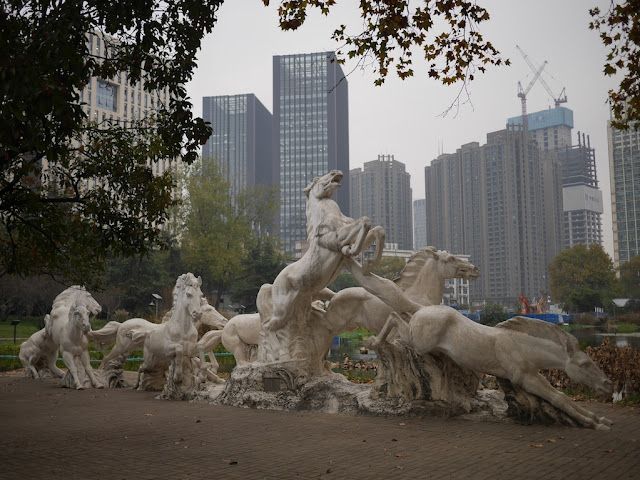 |
| Eight Fine Horses (八骏马), 1984, by Xie Congshi (谢从诗) at Jiefang Park in Wuhan |
Monday, November 20, 2017
Sunday, November 19, 2017
Perspective on a Old Tower in Wuhan
Posted by
Brian Glucroft
at
10:43 PM
In 1291 somebody climbed many steep, narrow, and irregular stone steps to reach the highest level of the Hongshan Pagoda in Wuhan, China. More than 700 years later somebody else did the same.
But only one of us is still alive today.
* * *
Now that I've confirmed my continued existence, at least up until the time I post this, I will add that, yes, I am now in Wuhan, the capital of Hubei province. There is an immense backlog of posts I have been wanting to write, but I have been heavily preoccupied with the exploration / collection side of things lately. Also, the amount of change I have seen in Wuhan, Changsha, and elsewhere has left me wanting to digest things more fully.
So on that note, here is a photo of the Hongshan Pagoda taken by Frederick G. Clapp sometime between 1913-1915:
And here is a recent view from the tower including the Baotong Temple:
Wednesday, November 15, 2017
Subscribe to:
Posts (Atom)

